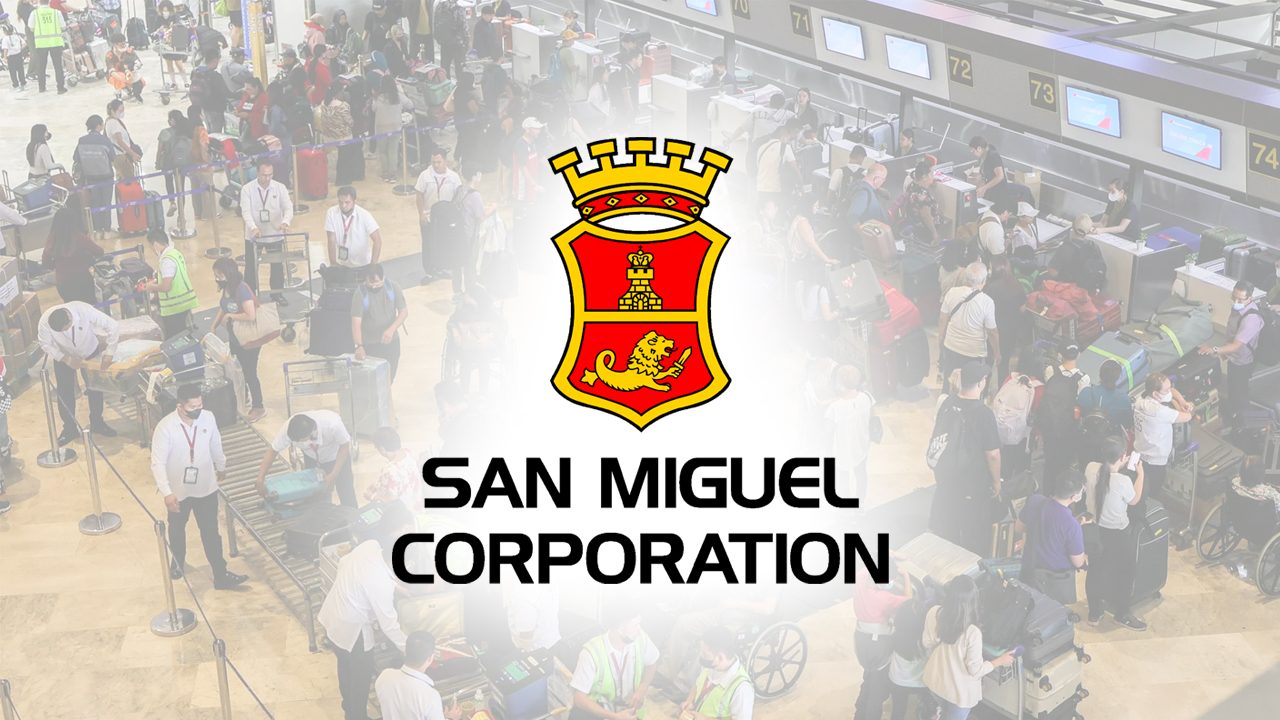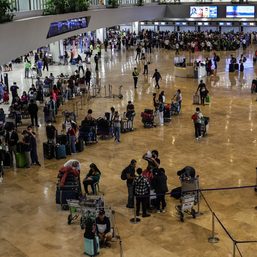SUMMARY
This is AI generated summarization, which may have errors. For context, always refer to the full article.

After snapping up the rights to Bulacan Airport, San Miguel seems poised to secure an even bigger prize, with the consortium that it leads now posting the highest bid amount for the Ninoy Aquino International Airport (NAIA).
Ramon Ang’s conglomerate already seems ready to celebrate, sending out a press release mere hours after bidders for the project bared their proposals. In it, San Miguel announced its “readiness to take on the modernization of the Ninoy Aquino International Airport.”
The Department of Transportation (DOTr) doesn’t officially pick a winning bidder until February 14. But if past statements by the transportation secretary are any indication, it seems the government will pick the bidder that offers the best revenue share. And San Miguel’s consortium bet big: offering 82.16% of its gross revenue to the government. The next highest bidder offered just 33.30%.
With his victory looming, Ang even praised the DOTr for “facilitating a transparent and equitable bidding process.” But is everything really all as it seems?

Let’s start with San Miguel’s consortium partners. Here are the roles that each member of the SMC-SAP and Company Consortium plays, along with their ownership stake based on the documents shown during a DOTr livestream:
- San Miguel Holdings Corporation – Lead member and financial qualifying entity (33%)
- RMM Asian Logistics Inc. – Member (30%)
- RLW Aviation Development Inc. – Member (27%)
- Incheon International Airport Corp – Operations and Maintenance Partner (10%)

San Miguel and Incheon International Airport Corporation, operator of South Korea’s main international airport, are well-known names. But who are behind the two other obscure companies?
Online searches return nothing about RMM Asian Logistics or RLW Aviation Development besides mentions of them in reports on the NAIA bidding. San Miguel also made no mention of them either in its press release, focusing instead on its “strategic collaboration” with the South Korean operator.
A document leaked to Rappler suggested that RMM Asian Logistics and RLW Aviation Development were merely being used by San Miguel to skirt ownership limits for NAIA.
“There is information that RMM Asian Logistics and RLW Aviation Development were incorporated on the same day, has no clear financial capacity and use the same corporate address,” the leaked document read. “While not prohibited, these may be indicators that the two companies are merely nominees to circumvent the [Greater Capital Region] airport limitation in the [instructions to bidders] which is capped at 33%.”
And if you dig deeper into these two companies, you’ll find something fishy.
Both companies were indeed incorporated at the same time. Records from the Securities and Exchange Commission (SEC) showed the period dates of both their articles of incorporation and by-laws being December 15, 2023, while the period dates of both their general information sheets were December 19, 2023. Here are screenshots from the SEC’s website:


RMM Asian Logistics and RLW Aviation Development both have their offices in Taipan Place based on documents shown in the DOTr’s livestream. And both companies also have a meager paid-up capital of P6.25 million. Why are such small companies bidding for a multi-billion project?
RMM Asian Logistics is wholly owned by Raymond Miller Moreno, a Filipino. This could be the same Raymond Moreno who served as the former president and chairman of the defunct Liberty Telecoms Holdings. Incidentally, San Miguel was also heavily invested in that company, with Ramon Ang concurrently sitting as Liberty Telecoms chairman and SMC president at one point.

That Raymond Moreno also pleaded guilty to charges of conspiracy, filing a false statement, and tax evasion brought up by the US government in 1987. Moreno received millions of dollars in kickbacks from US-funded deals, which were aimed at modernizing the communication system of the Philippine armed forces.
Meanwhile, a certain Robert Lee Wong, also a Filipino, owns 100% of the conglomerate member RLW Aviation Development. There is little information online about Wong.

Incheon International Airport Corporation, San Miguel’s other partner, isn’t scot-free either. Although the state-owned company operates one of the world’s best and biggest airports, it’s also had its share of controversies – from labor issues to large-scale tax evasion. The airport operator was also fined by South Korea’s antitrust agency for unfair business practices when dealing with its construction contractors and restaurant operators.
Note too that before any winning bidder is announced, the government must first settle a dispute filed by a bidder against another bidder. Transportation Undersecretary TJ Batan said that the Pre-Qualification Bids and Awards Committee will investigate and sort out the dispute before the February 14 awarding. The DOTr has not named names, but could the dispute involve San Miguel?
Ownership limits
Rappler earlier reported how ownership limits complicated San Miguel’s path to NAIA.
Originally, bidding guidelines stated that a company that already operates an airport in Clark, Bulacan, or Cavite cannot be the sole private concessionaire of NAIA. The only way they could bid for the project is to be part of a consortium in which their ownership stake is capped at 20%.
An aviation official told Rappler that these limits were in place to preserve competition and prevent big businesses from owning multiple airports. But if you ask Ramon Ang, having both the Bulacan Airport and NAIA under his belt will allow “potential synergies” and “enhance operational efficiencies, reduce costs, and optimize flight schedules.”
“Our vision is to create an integrated airport network that not only improves the travel experience but also supports sustainable economic growth and elevates the Philippines as a prime hub for tourism, business, and investment in the region,” Ang said in a statement emailed after his group emerged as the frontrunner in the bid.
Things weren’t always so certain for the tycoon. During the pre-bidding conference for the NAIA project – and long before San Miguel got ahead of the pack – Rappler overheard San Miguel’s delegation complaining about the ownership limits. Is the government using ownership limits, they wondered, to exclude them and “favor” certain bidders?
Later, we learned that San Miguel wrote a letter to the government about it. That led to the ownership cap being bumped up to 33%, paving the way for the conglomerate to form SMC-SAP and Company and join the bid.
But if the two other consortium members really are just acting as nominees, then it would seem that even a third is not enough. San Miguel wants a bigger slice of the pie. – Rappler.com
1 comment
How does this make you feel?







![[Under 3 Minutes] When will we see modern jeepneys on the road?](https://www.rappler.com/tachyon/2024/04/francisco-motors-modern-jeepney-prototype-1.jpg?resize=257%2C257&crop=590px%2C0px%2C1012px%2C1012px)


Thanks to Rappler and journalist Lance Spencer Yu. The bidding process does not seem to be at all “transparent and equitable.” Is the saying “birds of the same feather flock together” applicable in this incident? (Note: Meaning – corporations of the same kind connive together and, similarly with corporations and governments of the same character, too.) In the end, what might be found is not something “fishy” but rather “sharky.”